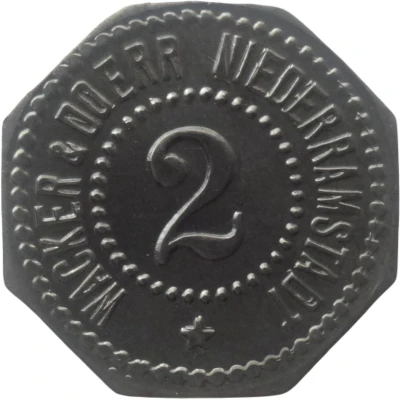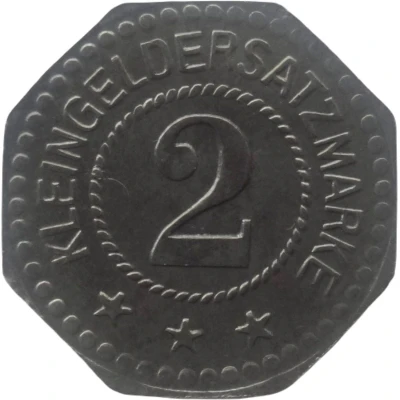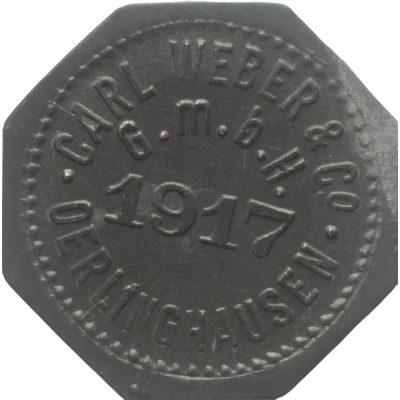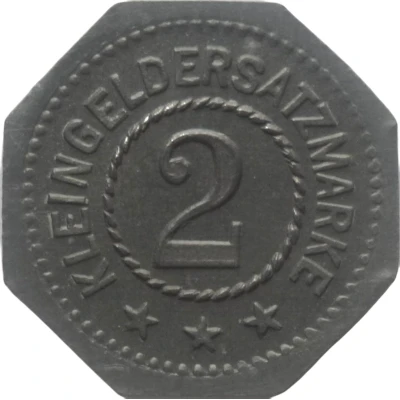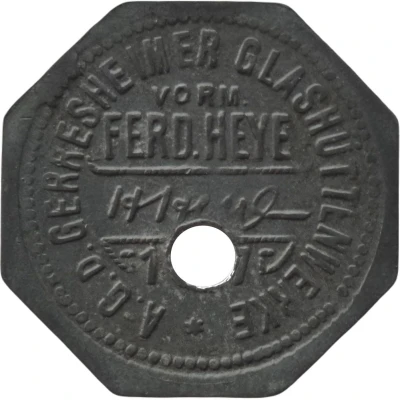
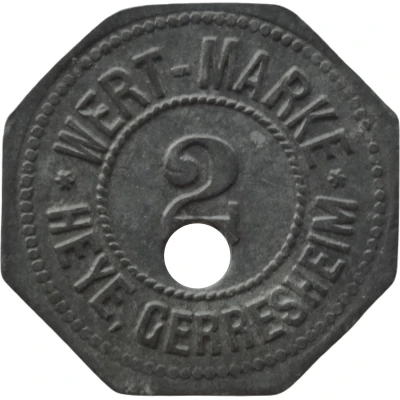

© Willem63 (CC BY-NC-SA)
2 Pfennigs - Gerresheim Glashüttenwerke vorm. Ferd. Heye
1917 year| Zinc | 2.1 g | 21.0 mm |
| Issuer | German notgeld (Germany) |
|---|---|
| Emperor | William II (Wilhelm II) (1888-1918) |
| Type | Standard circulation coin |
| Year | 1917 |
| Value | 2 Pfennigs (2 Pfennige) (0.02) |
| Currency | Mark (1914-1924) |
| Composition | Zinc |
| Weight | 2.1 g |
| Diameter | 21.0 mm |
| Thickness | 1.0 mm |
| Shape | Octagonal (8-sided) with a hole (Hole 3,5 mm) |
| Technique | Milled |
| Orientation | Medal alignment ↑↑ |
| Demonetized | Yes |
| Updated | 2024-10-04 |
| Numista | N#338323 |
|---|---|
| Rarity index | 97% |
Reverse
Pearl rim, legend surrounding rope circle with denomination centered
Script: Latin
Lettering:
WERT-MARKE
2
✶ HEYE, GERRESHEIM ✶
Edge
Plain
Comment
Menzel: BBBInteresting fact
One interesting fact about the 2 Pfennigs - Gerresheim (Glashüttenwerke vorm. Ferd. Heye) 1917 coin from German notgeld (Germany) made of Zinc weighing 2.1 g is that it was produced during a time of economic crisis and hyperinflation in Germany, specifically during the period of 1914-1924. The coin was part of an emergency currency issue, known as "Notgeld," which translates to "emergency money" in English. The Notgeld was introduced to address the shortage of small denomination coins and banknotes caused by the war and the subsequent economic crisis. The 2 Pfennigs coin was one of the many different types of Notgeld coins issued during this period, and it features a unique design that reflects the economic and political climate of the time.
